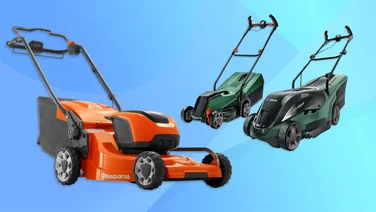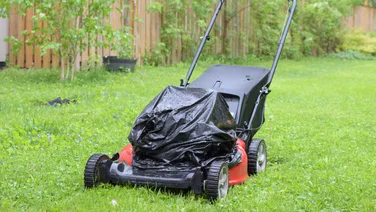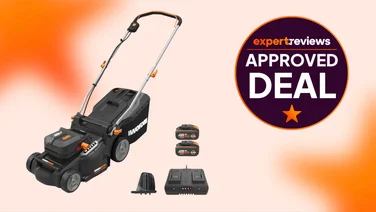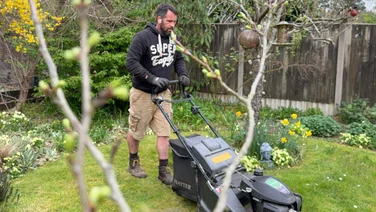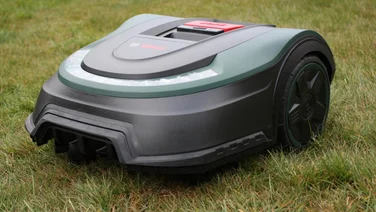To help us provide you with free impartial advice, we may earn a commission if you buy through links on our site. Learn more

The first step to a beautiful garden is a well-kept lawn, and for that it’s essential to know how to remove weeds to leave a uniform-looking patch of grass. While there will be those people who enjoy a wilder looking lawn, happy for nature to do its thing, the majority will prefer for weeds to be gone.
However, keeping on top of weeds can feel like a never-ending task. Interlopers such as dandelions, thistles and clover can all spoil a lawn’s appearance and prove notoriously tricky to eradicate. Weeds also sap much-needed nutrients from the soil, leaving grass depleted of moisture and more, and can take over quickly if left unchecked.
Note that clearing a lawn of weeds isn’t simply a matter of spraying over some weed killer. If not tackled properly, you could in fact kill off healthy grass and leave the lawn looking even worse.
Luckily, we have all the tools and advice you need to take down unwanted weeds from your lawn – and it needn’t be an expensive eco-headache. Read on to discover our step-by-step guide on how to restore your lawn to its former glory.
READ NEXT: Best cordless lawnmower
How to remove weeds from a lawn
Should you remove weeds from a lawn?
As we touched on above, what one considers a weed will differ from person to person. Many weeds are pretty, and can be important for pollinating insects and biodiversity; but you may prefer these invasive species not to be in your lawn. Weeds spread quickly and easily, and can steal moisture and nutrients from grass and other plants, too. Nevertheless, if it’s important to you to support local wildlife, you can always reserve a section of your garden to go wild, and manicure the rest of the lawn.
When should you remove weeds from a lawn?
It’s best to act as soon as possible. It’s far easier to spot-target weeds as and when you find them, rather than having to deal with an entire batch of them once they’ve had the chance to multiply. Weeds thrive in spring and summer, spring showers followed by lots of sunlight are a weed’s dream, so keep your eyes peeled at such times for newcomers.You can follow one of several plans of attack, or employ a combination of methods to achieve good results.
- Manual removal – This is the most important and effective way to control weeds and should be your first step.
- Weed killer – Applying a specialist lawn weed killer to occasional weeds will help you to stay on top of potential spreading without compromising the integrity of the grass.
- Lawn care solutions – A healthy, well-fed lawn is the best defence against weeds taking hold, and there are plenty of treatments you can use to encourage greener grass growth.
READ NEXT: Best lawn mower
What tools do you need to remove weeds from a lawn?
A hand-fork or weeding tool is essential to tackle weeds, and a rake is useful for ongoing lawn health. If you don’t have all three, we highly recommend the brilliant Wolf-Garten Multi-change, which our reviewer praised for its versatility. Otherwise, use whatever style and height of weed extractor is comfortable for you, although a corkscrew-style extractor is preferable to aid root removal. If you’re dealing with moss rather than general weeds, then use the tools and advice offered in our ‘How to get rid of moss in lawns’ guide.
How to manually remove weeds from a lawn
Using your chosen tool, target the weed and ensure you remove the root of the plant. Many weeds such as dandelions have extremely long roots and these can easily regrow. Take care to remove any seed heads in particular, since these will self-seed by blowing across your lawn.
READ NEXT: Best robot lawn mower
How to use weed killer to remove weeds from a lawn
Weed killer should be applied on a dry day with a dry forecast to stop the formula from being washed away. Use a lawn-safe weed killer such as Weedol Lawn Weed Killer mixed to the manufacturer’s instructions, and spray as directed to target weeds. Some weed killers will be premixed and come ready for use in a dedicated container, while others may need to be mixed with water and spread on lawns using a spray watering can. Lawn-safe weed killers will target weeds without harming grass; but be sure to carefully follow manufacturer’s advice and follow any safety advice with regards to children and pets.
For paths and other areas, use other weed-killing solutions. Not sure what weed killer is right for you? Read our guide to the best weed killer.
No weed killer? A solution of white vinegar or boiling water can work as well.
READ NEXT: Best strimmers and grass trimmers
How to prevent weeds from returning
It’s almost impossible to eradicate weeds in their entirety, so do expect them to rear their invasive heads from time to time. However, to prevent them from taking hold in future, try the below.
-
- Rake regularly – This will remove moss and creeping weed varieties before they become a problem.
- Mow regularly – Keeping lawns neat and healthy is vital for strong, hardy grass. Take care not to mow too short – a third off is best – and follow our guide on ‘How to mow a lawn’ for more detailed advice.
- Reseeding – Bare patches on your lawn are hotspots for weeds, so target brown spots with good-quality grass seed or new turf in spring or autumn.
- Feed your lawn – Use a dedicated lawn feed treatment such as Miracle-Gro EverGreen Complete 4 in 1 to ensure your grass gets all the nutrients it needs.
- Lime – If your soil is acidic, you can scatter lime over winter to repel weeds from getting their grip into your lawn. This is best performed over winter; you’ll need to check your soil pH to see if it’s suitable.
READ NEXT: Best patio cleaner

